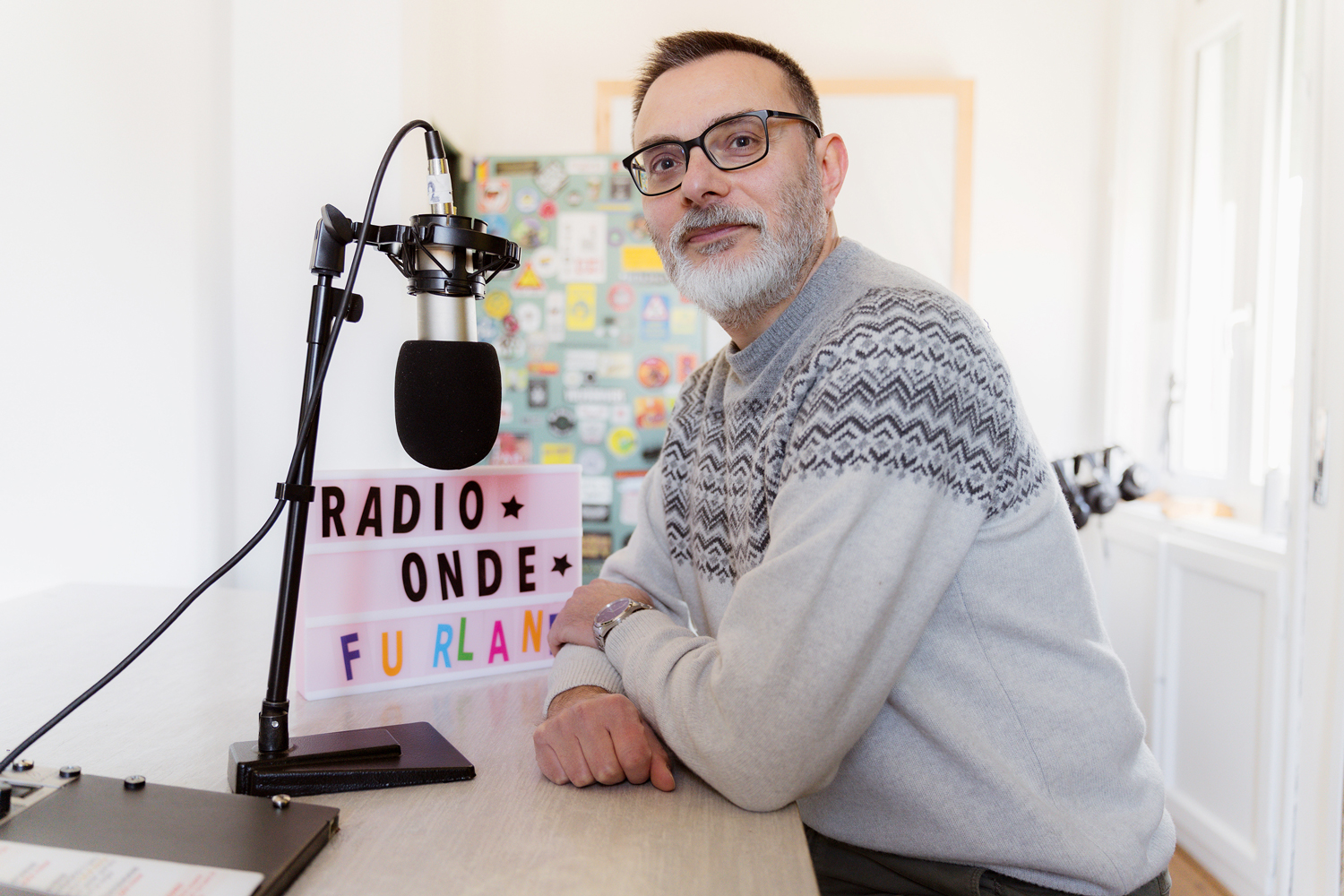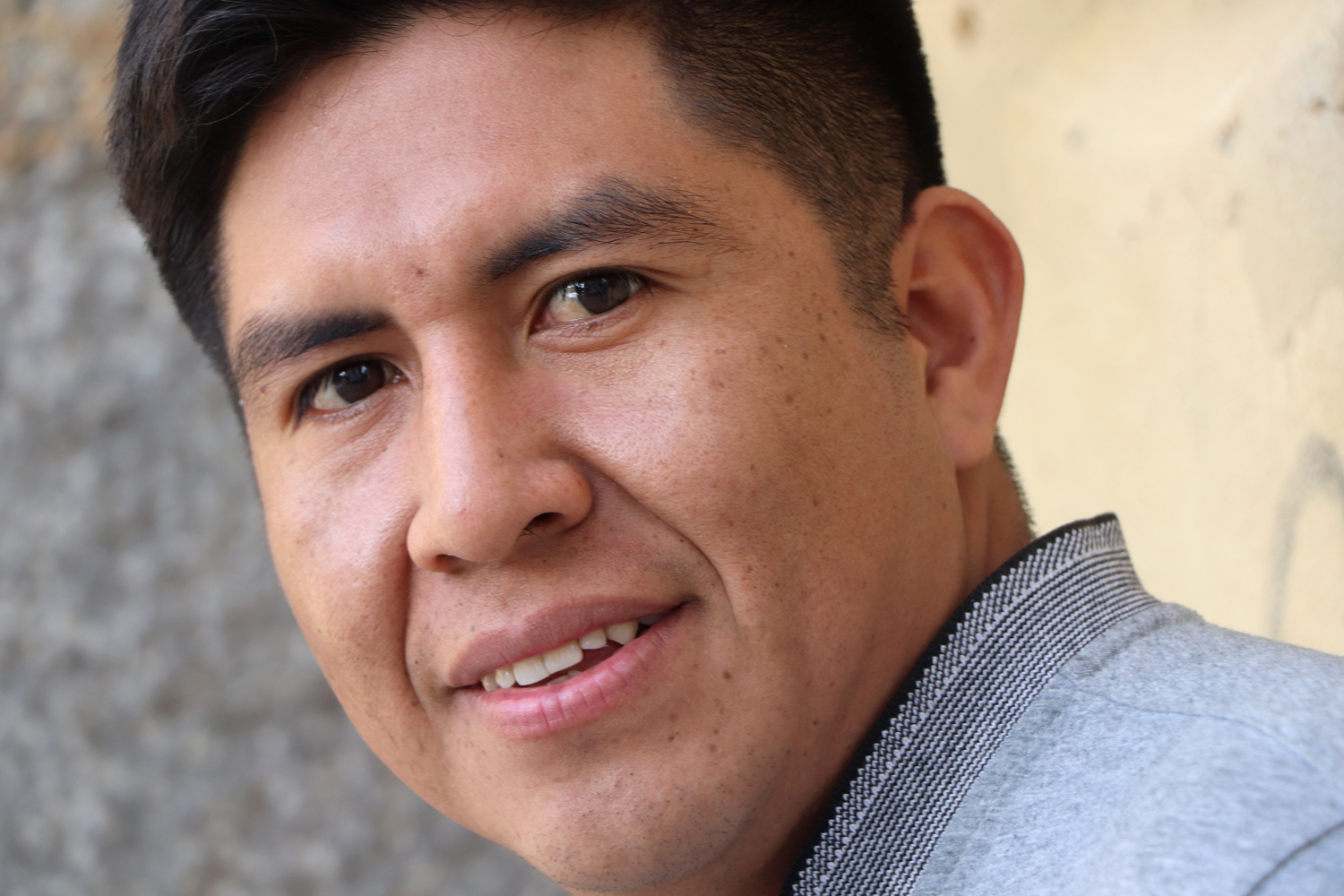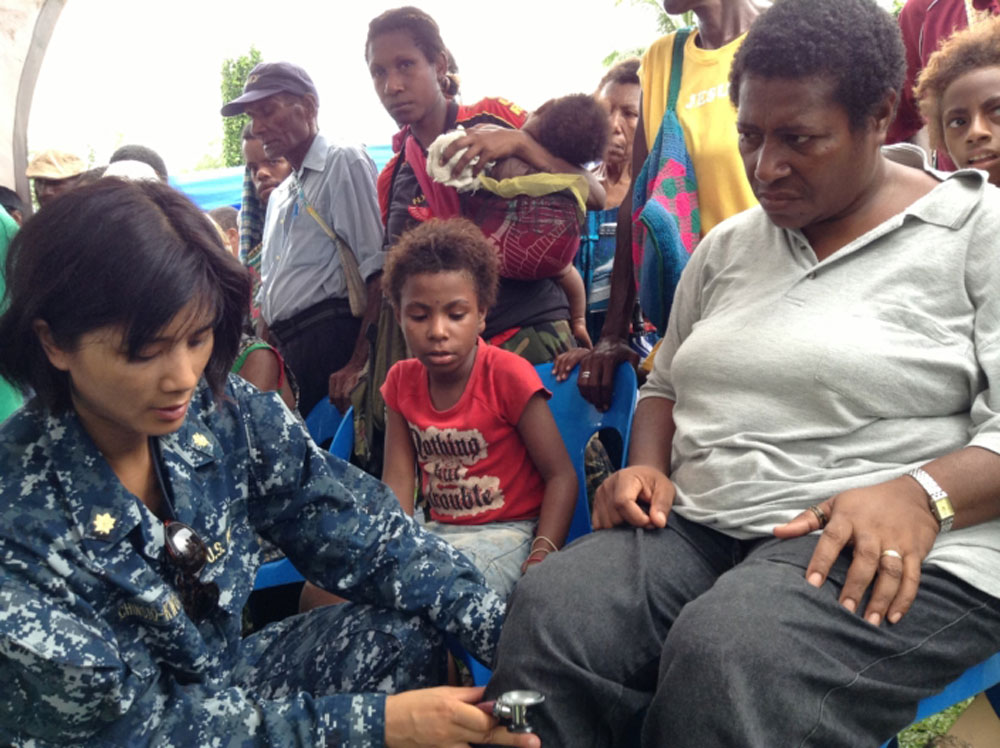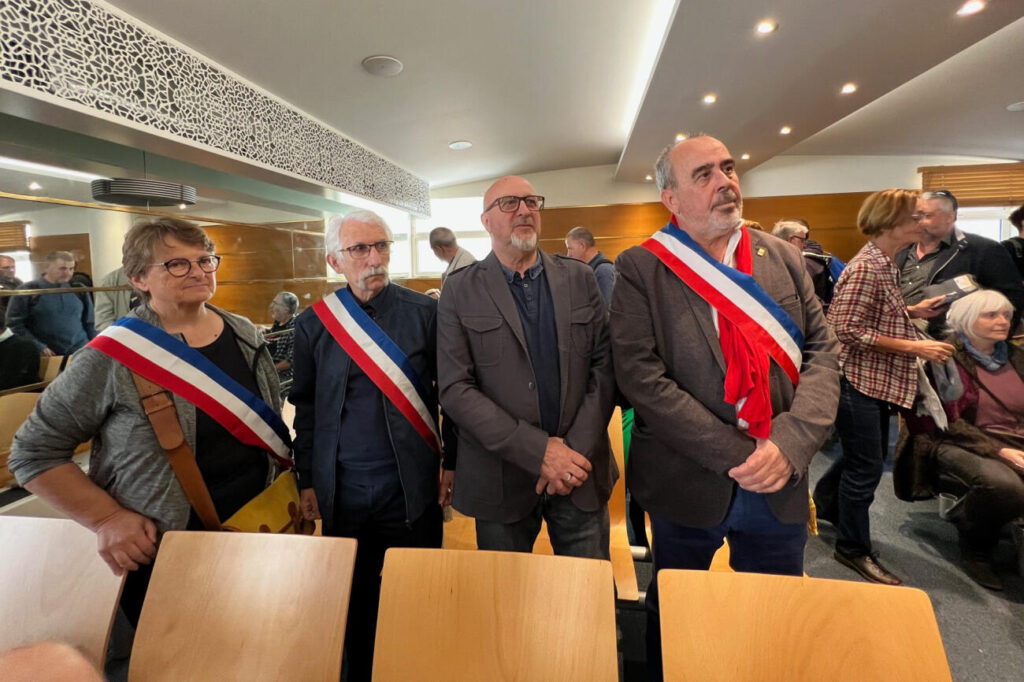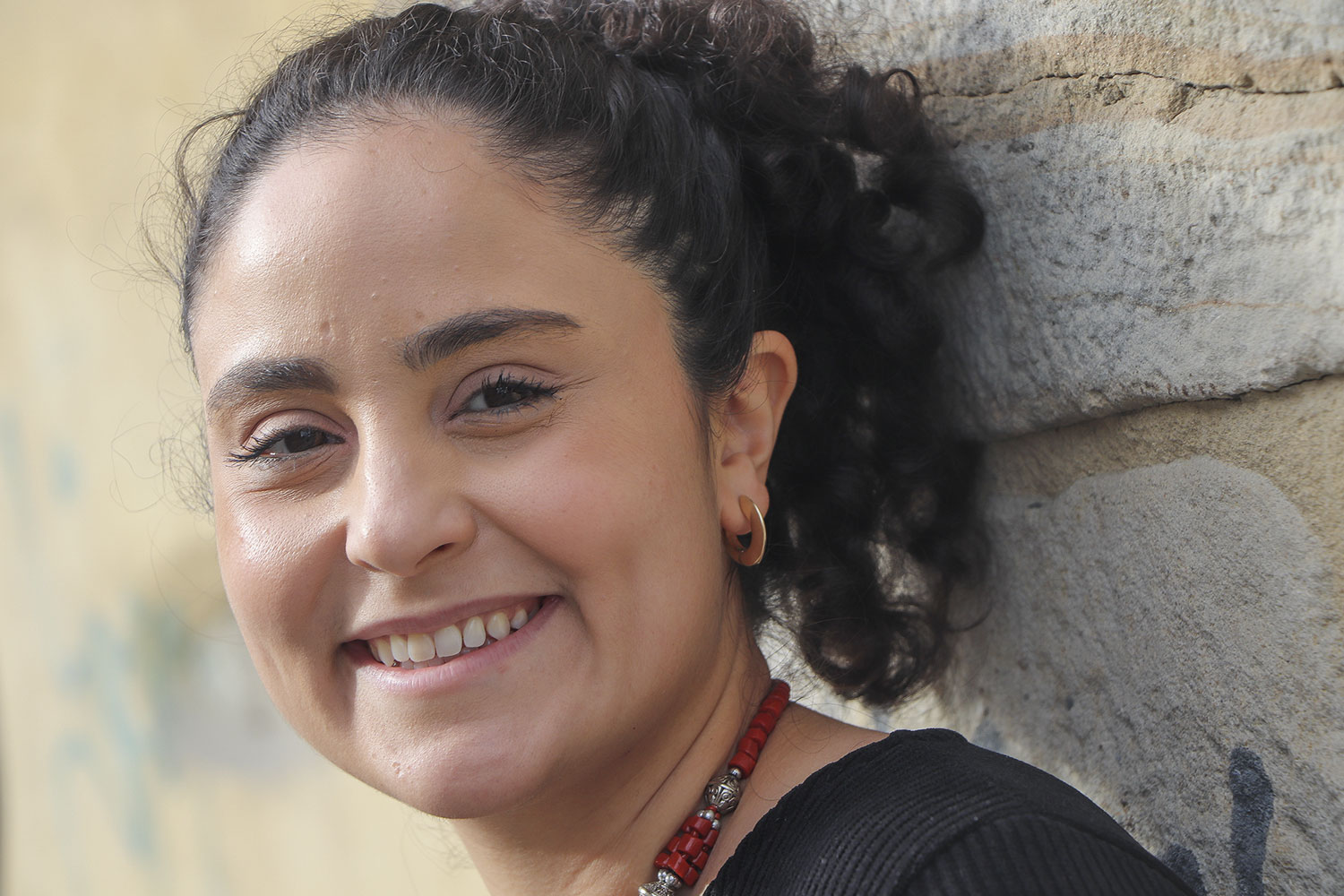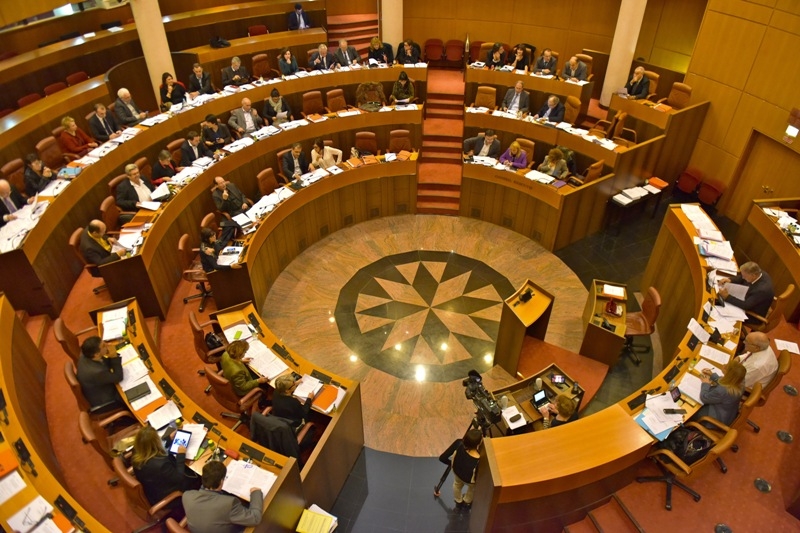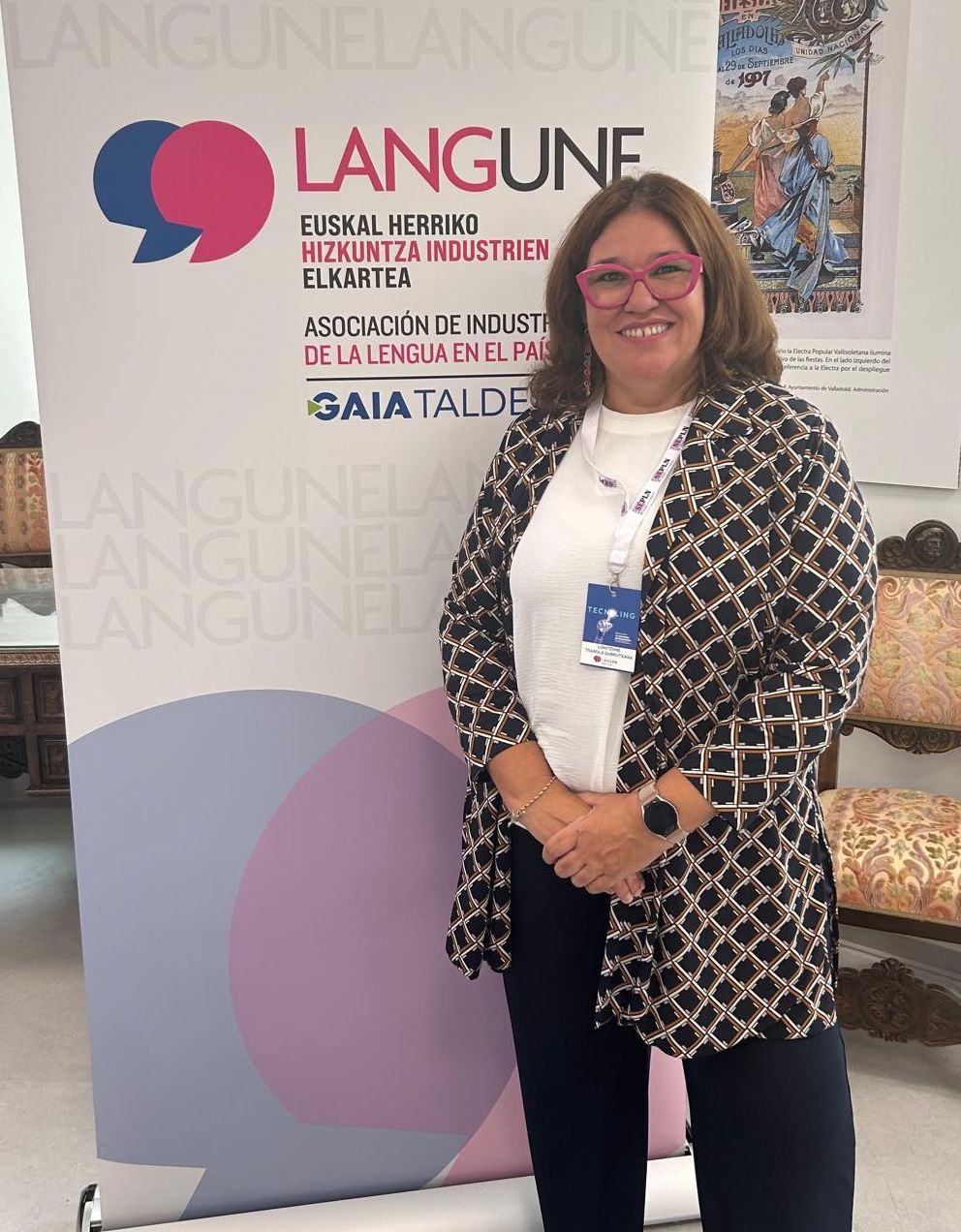Euskera is the third most widely used language on European streaming platforms
- Netflix, Amazon Prime and Disney+ use only five languages accepted by the European Charter of Minority Languages. Catalan dominates by far between the five. It is followed by Galician, Basque, Luxembourgish and Scottish Gaelic. The research has been led by the Nor Research Group of the UPV, under the direction of Katixa Agirre. Researchers from Pompeu Fabra and Santiago de Conpostela universities have also participated.
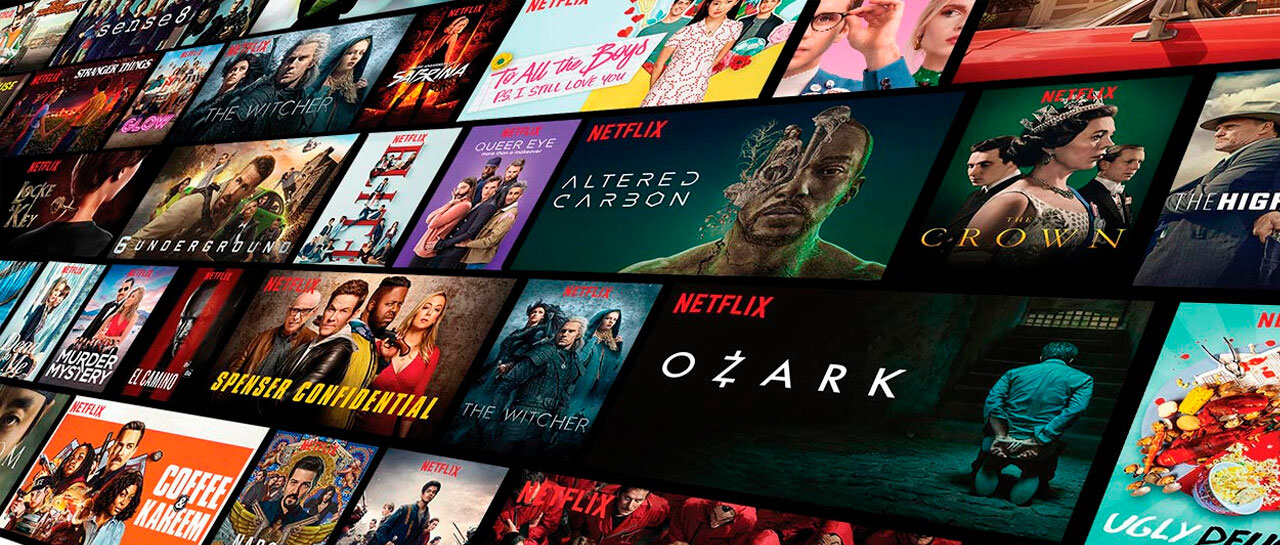
The authors of the study are: Katixa Agirre Miguelez, Attendant Mª López Gómez, Naiara Larrakoetxea Salgado, Blanca Arias Badia, Marijo Deogracias Horrillo and Josu Amezaga Albizu.
Researchers have analyzed data from three international platforms that offer streaming in audiovisual media. Netflix, Amazon Prime and Disney+ are the platforms researched and offer data collected in October 2023. As for Netflix, researchers have taken into account the linguistic offer in television or television content. Considering all other devices, Netflix's linguistic offer is higher, but researchers have rated that more than half of the consumption is made on television sets. Platforms use three ways to use language: audios, descriptive audio (for blind or visually impaired) and subtexts.
In the European Union, from 2010 to 2020, subscriptions to these platforms increased from 0.3 to 140 million. This means that 41% of households have a subscription to a platform. This form of audiovisual consumption increases the possibilities of access to international content and makes it difficult to consume European and local content.
The general condition can be seen in the lower infographic. The audios appear in blue, in red the descriptive audio and in green the subtitles. Netflix offers over 70 audio languages and nearly 60 subsections. Amazon Prime, for its part, has over 60 languages in both audio and subtitles. Disney+ does not reach 30 languages in any of the three moulds.
.jpg)
Situation of minority languages
Among the dozens of languages protected by the European Charter of Minority Languages of the European Union, the offer is very scarce and fluctuating. Only five languages are present on the three platforms, of which, by far, Catalan dominates. The other four languages are: Galician, Basque, Luxembourgish and Scottish Gaelic. Few in all modalities: descriptive audio, subtitles and audio.
Euskera is the third most widely used language. Netflix has 36 audio works, 129 subtitles and 53 audio descriptors. Amazon Prime has 118 productions to offer audio and 650 subtitles. It has no descriptive audio. At Disney+ there is nothing in Basque.
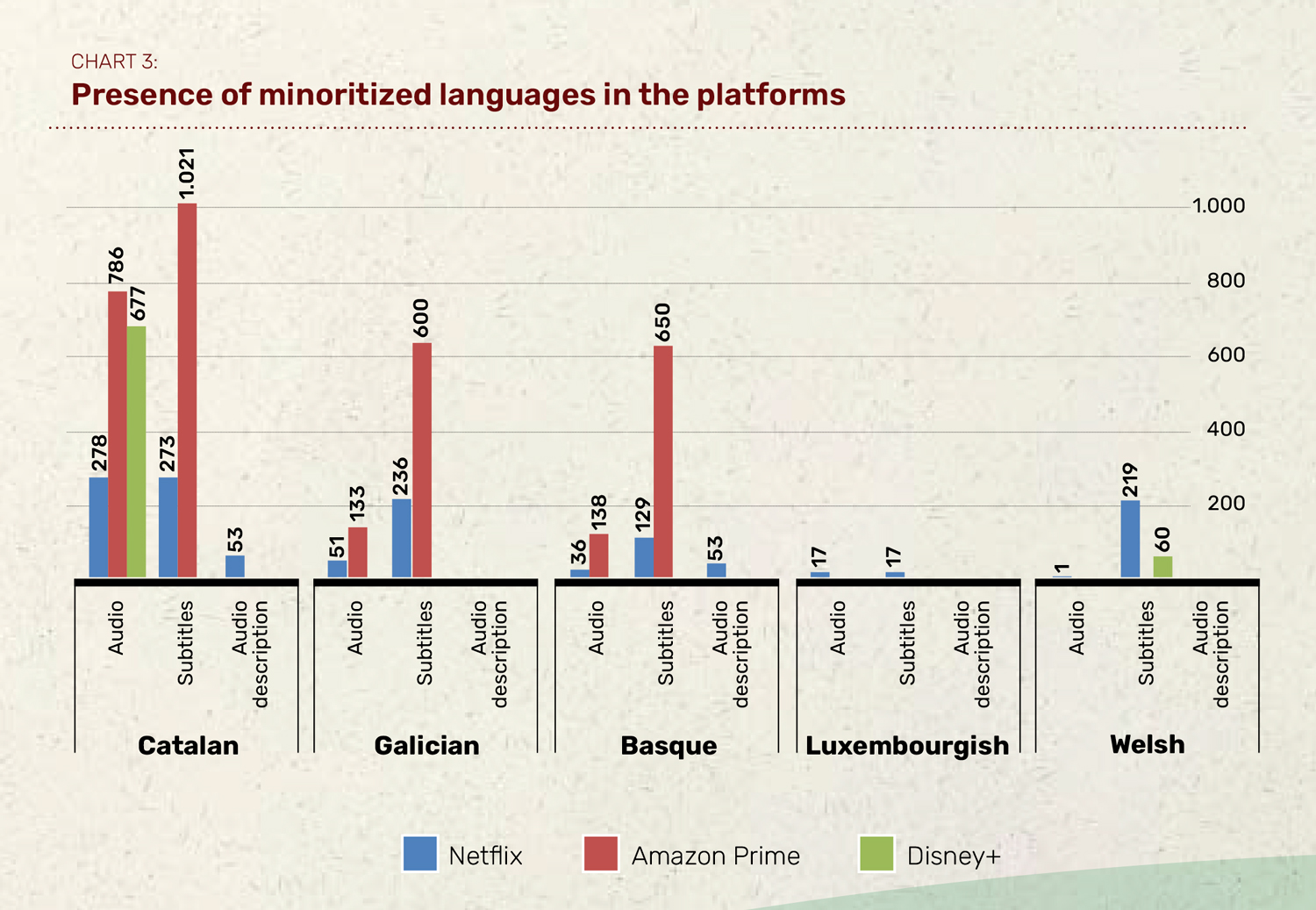
Platforms offer minority languages from a state perspective. In a State they can offer audio-visual in a minority language and not in the neighbouring State where the same language is spoken. It happens with Basque and Catalan. This happens with duplicate productions, but also with the original ones. For example, the Basque film that you can see in Hego Euskal Herria cannot be seen in Iparralde.
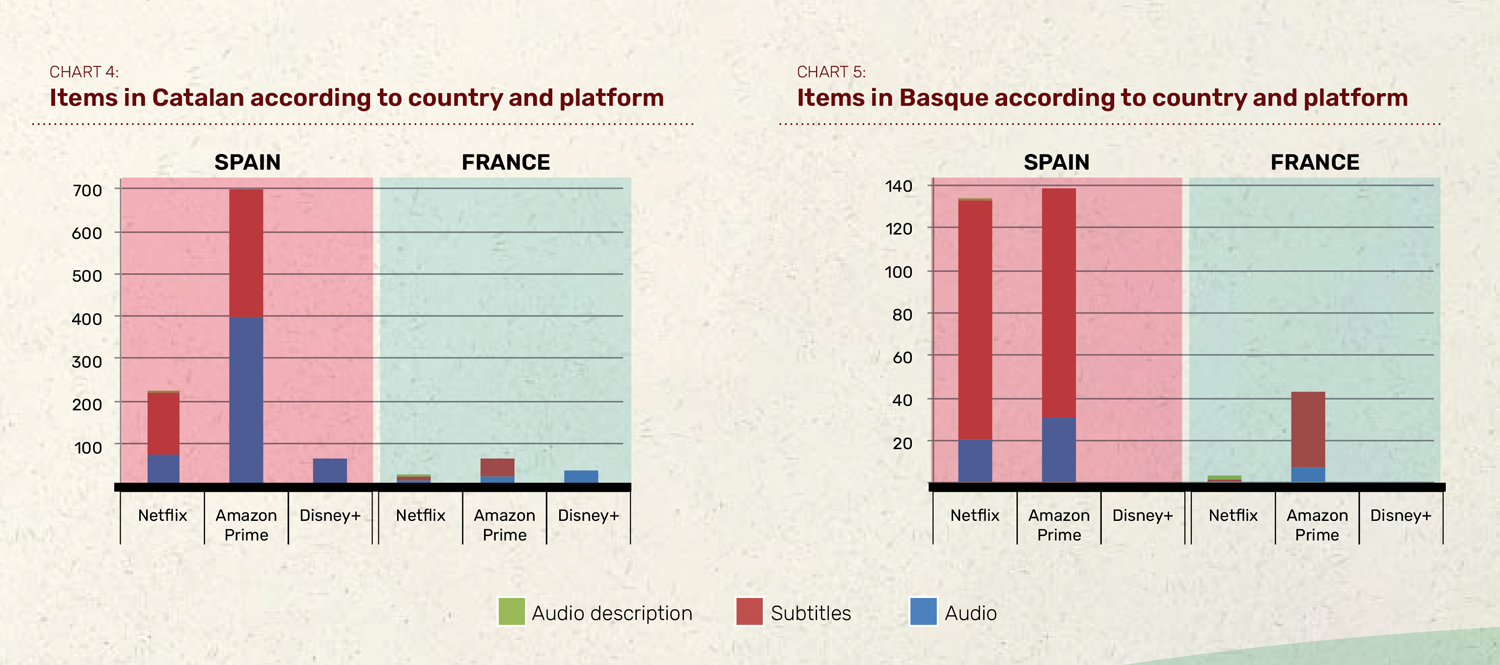
English domain
It's very obvious, for example, in audio descriptors. The situation of languages other than English is very weak. Netflix, for example, has almost 70,000 descriptive audio titles and 54 percent English. By far, the next main language is Spanish, with about 8,000 titles, 12% of the total. Netflix offers descriptive audio in 48 languages, but more than half of them have less than a hundred titles.
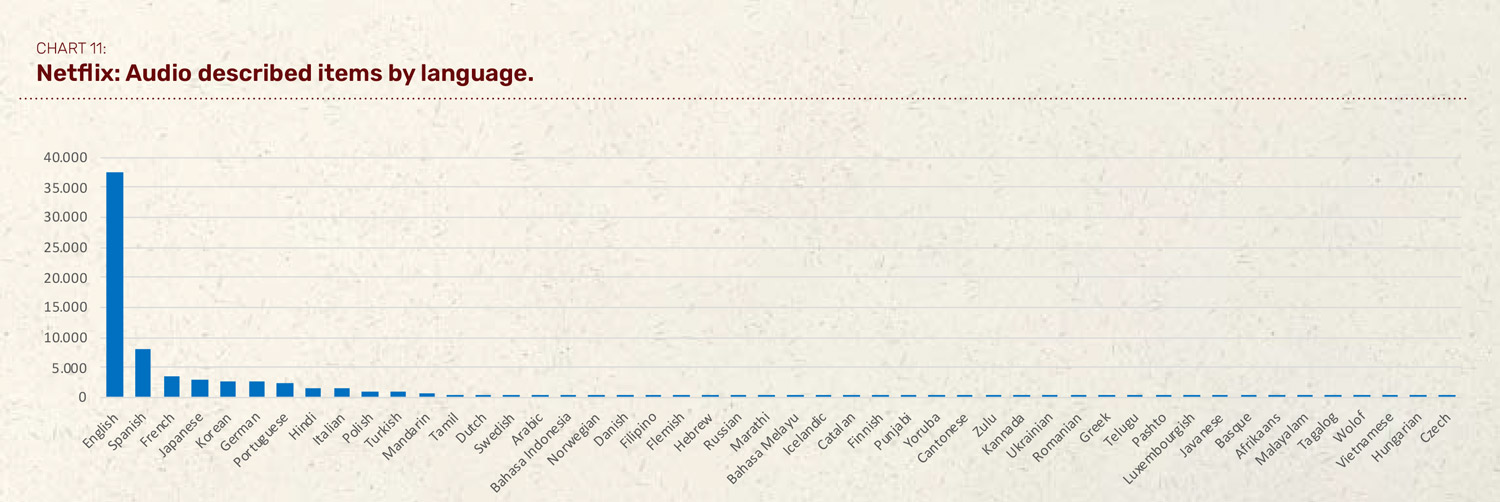
English dominates the three streaming platforms, both in audio and in subtitles. The exceptions are Belgium and Switzerland, which thanks to French and German are brought forward to English. Moreover, to see that English is in the background you have to look at the Amazon Prime platform. In Germany, France, Spain and Italy, the four main languages, the four state languages, are advanced to English in both audios and subtitles.
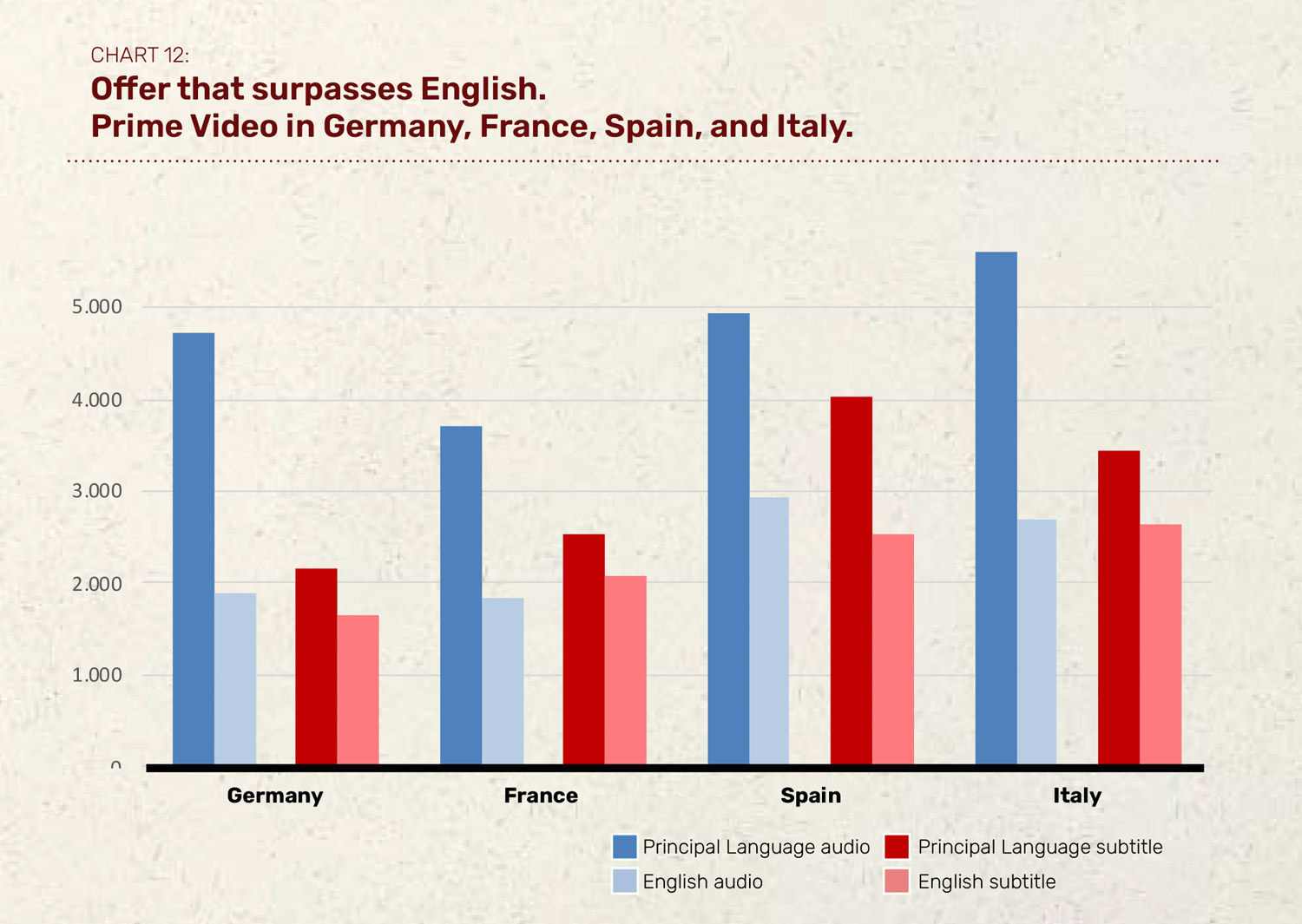
Research has also received languages which are not officially recognised, but which are spoken by millions of people in the European Union. The most common languages on the three platforms are Arabic, Turkish, Cantonese, Mandarin, Bahasa Indonesia, Korean, Hindu and Japanese.
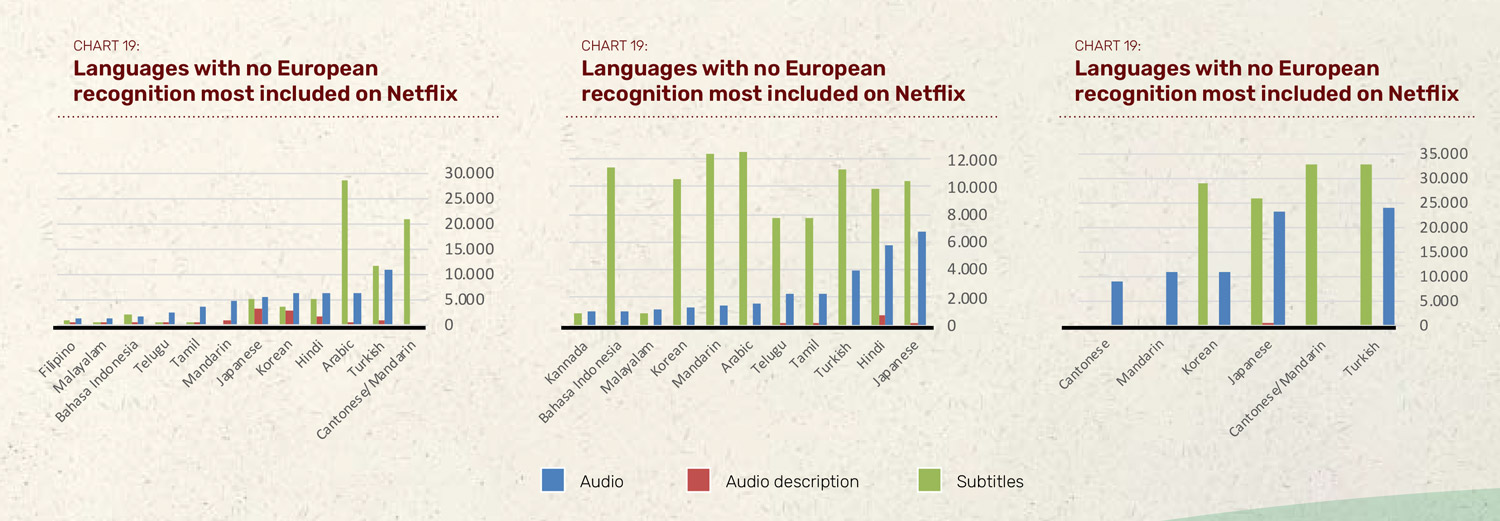
The more recent productions are, the more languages they appear on Netflix, audios. This does not mean that the predominance of English has worsened, as more than 70% of the total 2023 offer is in English. In the new titles, French, Spanish and German have increased to 40%. Languages not considered official in the European Union have also increased in production last year.
Lagun asko sumatu dut kezkatuta euskaldun gero eta gutxiagok ahoskatzen duelako elle-a. Haur eta gazte gehienek bezala, heldu askok ere galdu du hots hori ahoskatzeko gaitasuna, idatzian ere nahasteraino. Paretan itsatsitako kartel batean irakurri berri dugu: altxorraren biya... [+]
570.000 familiak euren haurren ikasgeletako hizkuntza nagusia zein izango den bozkatzeko aukera dute martxoaren 4ra arte: gaztelera edo katalana. Garikoitz Knörr filologoaren eta euskara irakaslearen arabera, kontsultak "ezbaian" jartzen du katalanaren zilegitasuna... [+]
Iragan urtarrilaren hondarrean, Bretainiako lurraldeko bi hizkuntza gutxituei buruzko azken inkesta soziolinguistikoaren emaitzak publiko egin zituzten bertako arduradunek. Haiek berek aitortu zuten harriturik gertatu zirela emaitzak ikustean. Hain zuzen ere, egoerak eta... [+]
Oinarrizko maia komunitateko U Yich Lu’um [Lurraren fruitu] organizazioko kide da, eta hizkuntza biziberritzea helburu duen Yúnyum erakundekoa. Bestalde, antropologoa da, hezkuntza prozesuen bideratzaile, eta emakumearen eskubideen aldeko aktibista eta militante... [+]
Korsikako legebiltzarkideek ezin dute Korsikako Asanblean korsikeraz hitz egin, Bastiako Auzitegiaren 2023ko epai baten arabera. Ebazpen horri helegitea jarri zion Asanbleak, baina debekua berretsi du orain auzitegi berak. Epaiak tokiko beste hizkuntzei eragiten diela ohartarazi... [+]








